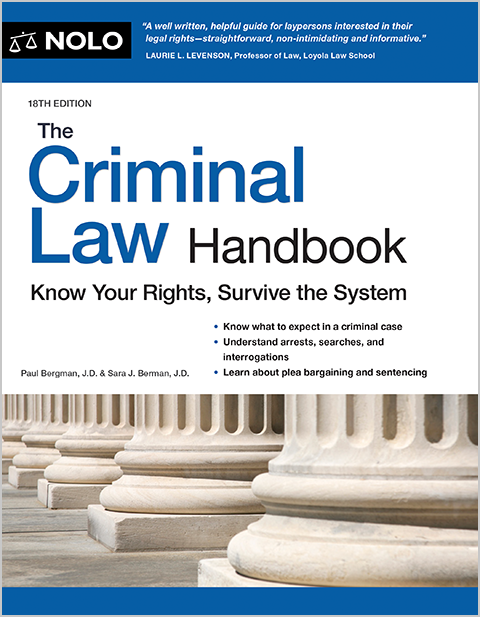Learn when adults and children can qualify for disability benefits for spina bifida.
Spina bifida (SPY-nuh BIFF-uh-duh) is a type of birth defect affecting a part of the spinal cord called the neural tube. The neural tube is a structure formed at a stage of fetal development that eventually becomes tissue surrounding the brain and spinal cord. If the neural tube doesn't close properly, it can cause physical and mental limitations that make it difficult to function.
There are three different types of spina bifida—spina bifida occulta, myelomeningocele, and meningocele. Depending on the kind of spina bifida you (or your child) have been diagnosed with and how severe the symptoms of the condition are, you may qualify for disability benefits from the Social Security Administration.
What Is Spina Bifida Occulta?
Spina bifida occulta is the least severe type of spina bifida. It's diagnosed when doctors find a small gap in between one or more of the bones that make up the spine. The spinal nerves are not generally affected by these gaps and therefore children generally do not show signs, symptoms, or neurological problems associated with this type of spina bifida. Because most people with spina bifida occulta experience no lasting symptoms from this form of spina bifida, it often goes undetected, and is unlikely to qualify for disability.
What are Myelomeningocele and Meningocele?
Myelomeningocele (my-ell-oh-mah-NIN-guh-seal) is the most severe form of spina bifida. It occurs when the neural tube doesn't close properly and remains open along several of the sections of the spine in the middle or lower back. The membrane and the spinal cord are then exposed, forming a sac on the back.
In most cases of myelomeningocele, the sac isn't covered by skin, leaving the membrane and spinal cord exposed and vulnerable to potentially life-threatening infections. Newborns with spina bifida often have partial or complete paralysis of the lower extremities (hips, legs, or feet). As the child ages, spina bifida can cause new issues, particularly during periods of rapid growth. Various back problems may arise, such as scoliosis, joint problems, or hip dislocation.
Meningocele is a very rare form of spina bifida that occurs when the meninges, which are protective membranes around the spinal cord, pop through the space in the spinal cord. Typically, the membrane can be removed through surgery and generally causes little to no damage to the nerves in the spine, making it unlikely to cause disabling limitations.
Can You Get Disability Benefits for Spina Bifida?
Adults who are unable to work full-time due to spina bifida may qualify for Social Security Disability Insurance (SSDI). Children with spina bifida who have significant functional limitations from spina bifida may be eligible for Supplemental Security Income (SSI) if their family has income and assets below a certain threshold.
Getting Disability for Spina Bifida as an Adult
The most common way for adults with spina bifida to qualify for disability is to show that they have a residual functional capacity (RFC) that rules out all jobs. Your RFC is a set of limitations about what you can and can't do at work, despite symptoms of spina bifida. Social Security reviews your medical records, doctors' opinions, and daily activities to determine what restrictions to include in your RFC.
People with spina bifida are likely to have an RFC that contains strength-related restrictions on walking, standing, lifting, and carrying. For example, if you're unable to stand for more than 30 minutes at a time or lift objects weighing more than 10 pounds, your RFC will likely limit you to sedentary (sit-down) work. Pain in your back and lower extremities that requires you to take extra breaks or elevate your legs can rule out even sit-down jobs. If you have mental restrictions such as trouble focusing, your RFC can contain limitations to the amount of public contact you can tolerate or what percentage of the day you'd be off-task.
After assessing your limitations, Social Security will compare your current RFC with the job duties of your past work to see if you could still perform that work today. If not, the agency will see whether any other jobs exist in the national economy you can do despite your RFC. For adults under the age of 50, this generally means needing to show that you're unable to perform even simple, sit-down work. Adults with spina bifida 50 years of age and older may have an easier time getting benefits under the medical-vocational rules.
Getting Disability for Spina Bifida as a Child
In order for your child to get SSI, your family must meet certain financial requirements. Once those qualifications are met, Social Security will review your child's medical records to determine if they meet or functionally equal a "listed impairment". Listed impairments are disorders that the Social Security Administration considers automatically disabling.
While spina bifida occulta, myelomeningocele, or meningocele aren't listed impairments on their own, your child might qualify for SSI if they have complications from spina bifida that cause significant limitations on their physical or intellectual development. Here are several ways that children with complications from spina bifida can meet a listing:
- Listing 101.15, Disorders of the skeletal spine resulting in compression of a nerve root. To qualify under this listing, your child's medical records must contain medical imaging (MRI or X-ray) that a nerve root in their back is being pressed on, causing pain and muscle weakness that prevents them from walking independently or from using one or more of their upper extremities.
- Listing 101.16, Lumbar stenosis resulting in compromise of the cauda equina. Your child can qualify under this listing if they have medical imaging that a bundle of nerves in the lower back (called the cauda equina) are being compressed, causing pain and muscle weakness that keeps them from walking independently or from using one or more of their upper extremities.
- Listing 111.08, Spinal cord disorders. To qualify under this listing, your child's medical records must either demonstrate a complete loss of function (absence of all motor and sensory abilities) for at least three months or be "grossly disorganized," meaning these functions are reduced to the extent that your child can't perform basic movements.
- Listing 112.05, Intellectual disorder. In severe cases of hydrocephalus that result in "significantly subaverage general intellectual or adaptive functioning" (defined as a full-scale IQ of 70 or below or a full-scale IQ between 71-75 and a verbal/performance IQ of 70 or below), your child may qualify for disability under this listing.
Children whose spina bifida isn't severe enough to meet a listing but still causes significant physical or mental limitations in certain areas (such as moving around or learning new things) can still qualify for SSI by functionally equaling the listings. Social Security will need to see that your child has a "marked" limitation in at least two, or an "extreme" limitation in at least one, functional areas. The agency determines functional equivalence by comparing your child's developmental progress to those of other children their age.
How Much Can I Receive in SSDI or SSI for Spina Bifida?
Social Security doesn't pay disability benefits based on the type of condition that's keeping you from working (or your child from functioning at a level similar to their age group). Instead, SSDI payments are calculated based on your work history and earnings record. The maximum you can receive in monthly SSDI benefits for 2025 is $4,018, but the average amount is much smaller, at around $1,580.
SSI payments are tied to the federal benefit rate, which changes every year to reflect cost-of-living increases. For 2025, the benefit rate is $967 per month, minus any countable income your family has in that month. That goes for adults on SSI as well as children, who are assumed for the purposes of SSI benefits to have some of the income that their parents make in that month (a process called "deeming income.")
Once your child turns 18, they're no longer able to receive benefits under the childhood listings. If your child's impairments continue, they'll be reevaluated for eligibility based on the adult listings. The requirements for the adult and child listings frequently overlap, so if your child's significant physical or mental impairments persist into adulthood, they may still qualify for disability benefits.
Getting a Lawyer to Help With Your Spina Bifida Claim
You aren't required to get a lawyer at any point in the Social Security benefits application process, but it's usually a good idea. An experienced disability attorney can help you gather and submit necessary medical records, get your doctor's opinion on whether you're able to work or if your child meets a listed impairment, and represent you at a hearing with an administrative law judge. Most disability lawyers work on contingency—meaning they don't get paid unless you win your claim—and offer free consultations, so you can ask around to find one who's a good fit.

